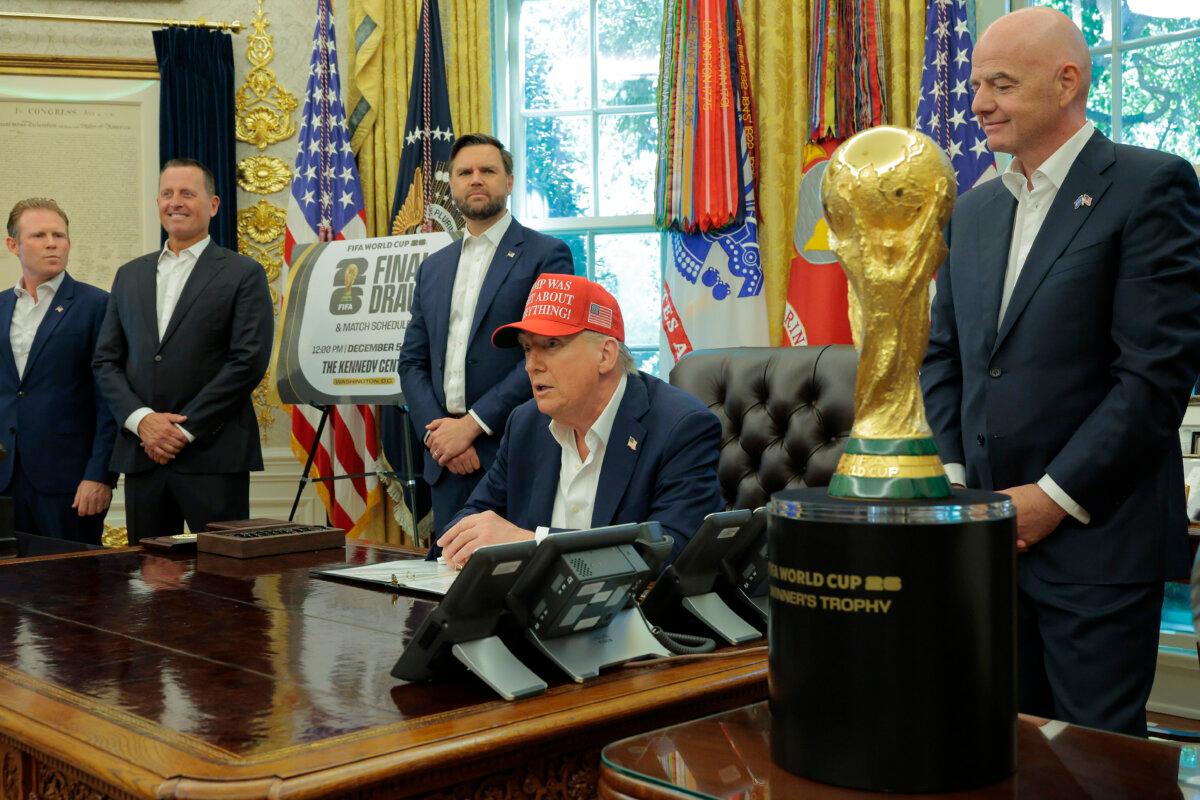By Andrew Moran
The White House announced Friday that the U.S. government now officially holds a 10 percent stake in struggling chipmaker Intel.
Commerce Secretary Howard Lutnick announced the deal on X.
“BIG NEWS: The United States of America now owns 10% of Intel, one of our great American technology companies,” Lutnick wrote.
The deal had been in the works since the White House signaled early this week that the U.S. government would seek a stake in the company in exchange for the almost $11 billion in grants from the CHIPS and Science Act.
Before the announcement, President Donald Trump confirmed that Intel had agreed to give the federal government a 10 percent stake in the company.
Trump, speaking to reporters at the Oval Office on Aug. 22, said that Intel CEO Lip-Bu Tan agreed to the arrangement during their Aug. 11 meeting.
“He walked in wanting to keep his job, and he ended up giving us $10 billion for the United States,” Trump said.
Despite Trump’s previous criticisms of Tan over his alleged connections to China, the president noted that he “liked him a lot” and “thought he was very good.”
“I said, ‘You know what? I think the United States should be given 10 percent of Intel.’ And he said, ‘I would consider that,’” Trump told reporters.
“I said, ‘I think it would be good having the United States as your partner.’ He agreed, and they’ve agreed to do it, and I think it’s a great deal for them.”
Intel, Trump said, had been left behind by many of its industry competitors, such as Nvidia and TSMC, in recent years.
“This historic agreement strengthens U.S. leadership in semiconductors, which will both grow our economy and help secure America’s technological edge,” Lutnick wrote.
He thanked Intel’s CEO “for striking a deal that’s fair to Intel and fair to the American People.”
Shares of Intel climbed by as much as 6 percent to close out the trading week, adding to the stock’s year-to-date gain of 22 percent.
Breathing Room for the Chipmaker
Government backing may offer Intel a much-needed cushion following its $19 billion annual loss—its first in nearly four decades.
The $100 billion company recently added to its momentum after receiving a $2 billion capital injection from Japan’s SoftBank.
Earlier this week, Lutnick noted that the federal government was not pursuing governance rights or a voting stake to direct Intel’s operations. Instead, the president wanted to obtain “a good return for the American taxpayer instead of just giving grants away,” he said.
“We want Intel to be successful in America,” Lutnick said in an Aug. 19 interview with CNBC’s “Squawk Box.”
“We’d like an American transistor built in America, right? We’d like an American to be doing that.”
The administration’s recent policy decisions have pushed for enhanced public-private partnerships with companies in the semiconductor and rare earths industries.
Earlier this month, Trump authorized export licenses for tech juggernauts Nvidia and Advanced Micro Devices (AMD) to sell artificial intelligence chips to China. In exchange, they will pay 15 percent of their revenues to the federal government, which is projected to total $2.2 billion.
Additionally, the Department of Defense purchased $400 million in shares in MP Materials, a rare-earth producer, to secure critical minerals and become the company’s largest shareholder.

Shares of MP Materials have surged 15 percent over the past month, adding to this year’s spike of about 320 percent.
These efforts have received support from an unlikely source: Sen. Bernie Sanders (I-Vt.).
“If microchip companies make a profit from the generous grants they receive from the federal government, the taxpayers of America have a right to a reasonable return on that investment,” Sanders, an independent who caucuses with Democrats, said in a statement.
Financial markets are closely monitoring the potential impact of government involvement in large companies, says Erik Boekel, Chief Commercial Officer at DHF Capital.
“Such measures could bolster state support for artificial intelligence development, potentially accelerating capital flows and strengthening long-term prospects for the sector,” Boekel said in a note emailed to The Epoch Times.
“At the same time, it could raise some concerns about competition and government interventionism.”
Tan became Intel CEO in March, succeeding Pat Gelsinger, who led the company from 2021 to 2024. So far, Tan has taken a different approach to revitalizing the company, including scaling back construction of U.S. factories, reducing the workforce by 30 percent, and resisting the sale of Intel Foundry—its chip manufacturing wing—to TSMC.
Savannah Pointer contributed to this story.





